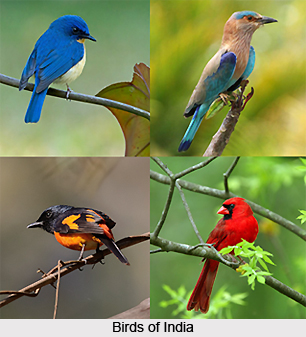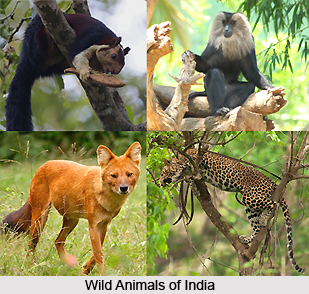 Wildlife Protection Act of 1972 is a comprehensive legislation that was enacted by the Government of India in 1972. The wild life laws in India have a long history. The first comprehensive legislation relating to protection of wild life was passed by the Parliament and it was assented by the President on 9th September, 1972 and came to be known as The Wild Life (Protection) Act, 1972. Wildlife Protection Act of 1972 extends to the whole of India except the state of Jammu and Kashmir. It provides for the protection of listed species of flora and fauna. Wildlife Protection Act, 1972 empowers central and state governments to declare any area a wildlife sanctuary or national park. India had only five designated national parks before the year 1972. The Wildlife Protection Act of 1972 has passed through several amendments.
Wildlife Protection Act of 1972 is a comprehensive legislation that was enacted by the Government of India in 1972. The wild life laws in India have a long history. The first comprehensive legislation relating to protection of wild life was passed by the Parliament and it was assented by the President on 9th September, 1972 and came to be known as The Wild Life (Protection) Act, 1972. Wildlife Protection Act of 1972 extends to the whole of India except the state of Jammu and Kashmir. It provides for the protection of listed species of flora and fauna. Wildlife Protection Act, 1972 empowers central and state governments to declare any area a wildlife sanctuary or national park. India had only five designated national parks before the year 1972. The Wildlife Protection Act of 1972 has passed through several amendments.
Objective of Wildlife Protection Act of 1972
The main objective behind the enactment of Wildlife Protection Act of 1972 was to control poaching and illegal trading of wildlife in the country. The act also aims at providing a powerful legal framework for conserving the wildlife by introduction of regulations such as prohibition of hunting, protection and management of wildlife habitats, establishment of protected areas, regulation and control of trade in parts and products derived from wildlife and management of zoos. The protected areas under the Act are categorized as National Parks, Wildlife Sanctuaries, Tiger Reserves, Conservation Reserves and Community Reserves.
Chapter I of Wildlife Protection Act of 1972
Definitions under Section 2 of Wildlife Protection Act of 1972 Section 2 of Chapter I of the Act provides several definitions.
•"Animal" includes amphibians, birds, mammals and reptiles and their young, and also includes, in the cases of birds and reptiles, their eggs.
•"Animal article" means an article made from any captive animal or wild animal, other than vermin and includes an article or object in which the whole or any part of such animal has been used, and ivory imported into India and article made there from.
•"Board" means the Wild Life Advisory Board constituted under sub-section (1) of section 6.
*
•"Captive animal" means any animal, specified in Schedule I, Schedule II, Schedule III or Schedule IV, which is captured or kept or bred in captivity;
•"Closed area" means the area which is declared under sub-section (1) of section 37 to be closed to hunting;
*
•"Government property" means any property referred to in section 39; 2 [or section 17H]
•"Habitat" includes land, water or vegetation which is the natural home of any wild animal;
•"Hunting", with its grammatical variations and cognate expressions, includes-
(a) Capturing, killing, poisoning, snaring and trapping of any wild animal and every attempt to do so.
(b) Driving any wild animal for any of the purposes specified in sub-clause (a).
(c) Injuring or destroying or taking any part of the body of any such animal or, in the case of wild birds or reptiles, damaging the eggs of such birds or reptiles or disturbing the eggs or nests of such birds of reptiles.
•"Land" includes canals, creeks and other water channels, reservoirs, rivers, steams and lakes, whether artificial or natural, [marshes and wetlands and also includes boulders and rocks].
•"Licence" means a licence granted under this Act.
•"National Park" means an area declared, whether under section 35 of section 38, or deemed, under sub-section (3) of section 66, to be declared, as a National Park.
•"Notification" means a notification published in the Official Gazette.
•"Sanctuary" means an area declared, whether under section 2 [26A] or section 66, to be declared as wild life sanctuary.
•"Taxidermy", with its grammatical variations and cognate expressions, means the curing, preparation or preservation of trophies.
•"Trophy" means the whole or any part of any captive animal or wild animal, other than vermin, which has been kept or preserved by any means, whether artificial or natural, and includes-
(a) Rugs, skins and specimens of such animal mounted in whole or in part through a process of taxidermy.
(b) Antler, horn, rhinoceros horn, hair, feather, nail, tooth, musk, eggs and nests;
• "Wild animal" means any animal found wild in nature and includes any animal specified in Schedule I, Schedule II, Schedule III, Schedule IV, Schedule V, wherever found.
• "Wild life" includes any animal, bees, butterflies, crustacean, fish and moths; and aquatic or land vegetation which form part of any habitat.
•"Zoo" means an establishment, whether stationary or mobile, where captive animals are kept for exhibition to the public but does not include a circus and an establishment of a licensed dealer in captive animal.
 Chapter II Wildlife Protection Act of 1972
Chapter II Wildlife Protection Act of 1972
Chapter II of Wildlife Protection Act of 1972 mentions the "Authorities to be appointed or constituted under the Act".
•Appointment of Director and other officers
•Appointment of Chief Wildlife Warden and other officers
•Power to delegate
•Constitution of the Wildlife Advisor-Y, Board
•Procedure to be followed by the Board
•Duties of the Wildlife Advisory Board
Chapter III of Wildlife Protection Act of 1972
Chapter III of Wildlife Protection Act of 1972 deals with "Hunting of Wild Animals". It describes what constitutes for hunting. According to Section 9 (Prohibition of hunting), "No person shall hunt any wild animal specified in Schedule I, II, III and IV except as provided under section 11 and section 12." Section 17 states the "Restrictions on hunting". Chapter IIIA deals with the "Protection of Specified Plants". There are various sections under this category.
•17A - Prohibition of picking, uprooting etc., of specified plants
•17B - Grant of permit for special purposes
•17C - Cultivation of specified plants without licence prohibited
•17D - Dealing in specified plants without licence prohibited
•17E - Declaration of stock
•17F - Possession, etc., of plants by licensee
•17G - Purchase etc., of specified plants
•17H - Plants to be Government property
Chapter IV of Wildlife Protection Act of 1972
Chapter IV of Wildlife Protection Act of 1972 describes "Sanctuaries, National Parks and Closed Areas". Section 38 mentions the "Power of Central Government to declare areas as sanctuaries or National Parks".
Chapter V of Wildlife Protection Act of 1972
Chapter V deals with "Trade or Commerce in Wild Animals, Animal Articles and Trophies". Chapter VA of the Act states "Prohibition of trade or commerce in trophies, animal articles, etc. derived from certain animals."
Chapter VI of Wildlife Protection Act of 1972
Chapter VI of Wildlife Protection Act of 1972 mentions "Prevention and detection of offences". There are various sections under this chapter.
•Power of entry, search, arrest and detention
•Penalties
•Attempts and abetment
•Punishment for wrongful seizure
•Power to compound offences
•Cognizance of offences
•Operation of other laws not barred
•Presumption to be made in certain cases
•Offences by companies
Chapter VII of Wildlife Protection Act of 1972
Chapter VII of Wildlife Protection Act of 1972 mentions miscellaneous sections.
•Officers to be public servants
•Protection of action taken in good faith
•Reward to persons
•Power to alter entries in Schedules
•Declaration of certain wild animals to be vermin
•Power of Central Government to make rules
•Power of State Government to make rules
•Rights of Scheduled Tribes to be protected
•Repeal and Savings



















